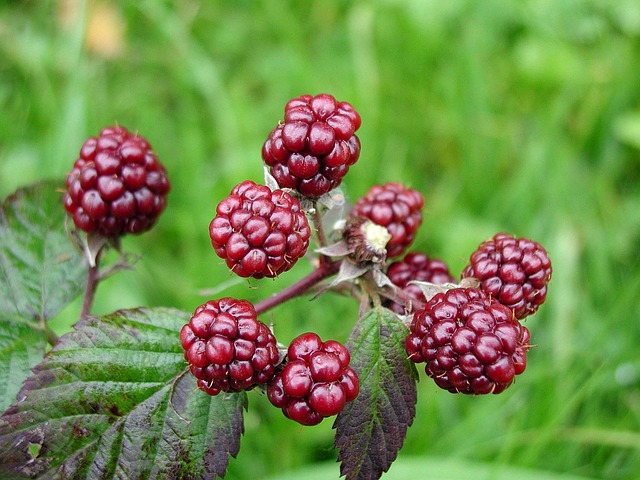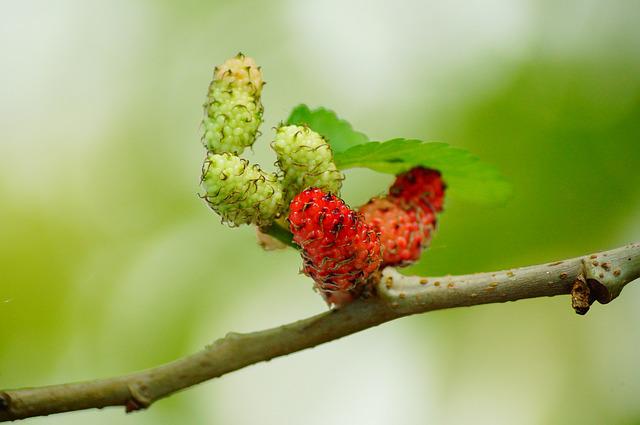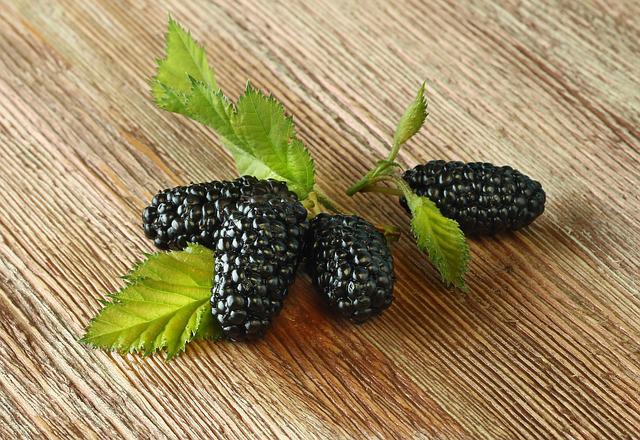Does Mulberry Have Seeds?

Mulberries have seeds. Red mulberry seeds (“stones”) are 2.8 mm long and 1.8 mm wide, while white mulberry seeds are 2-3 mm long and tiny leaf mulberry seeds are approximately 2 mm long (FNAEC 1997). The seeds of red and little leaf mulberries are yellowish, whereas the seeds of white mulberries are light brown. There is a maximum seed output of 22 g/tree for open-grown plants and 3 g/tree for understory plants (Halls 1973). The cotyledon tips of seed embryos come close to touching the radicle.
However, some types, such as the hybrid between red and white mulberries, and the Illinois everbearing mulberry, do not produce seeds. Before picking the fruits, you should take a few from each tree and check them.
Table of Contents
Growing Mulberry From Seeds
When to Harvest the Seeds?
When the fruits of the mulberry tree mature in the late summer, the seeds can be harvested from them. Mulberry trees (Morus spp.) are hardy in USDA zones 5 through 11 and can be grown in most areas depending on the species. Mulberry trees can be propagated in many methods. Birds and other animals that consume the berries spread the seeds by ingesting the berries’ nectar. The appropriate approach to sowing mulberry seeds can yield a healthy mulberry tree for your yard.
Cold Stratification of Seeds
Mulberry tree mature fruit should be harvested in late summer and stored in a cool, dry place until spring. Cold stratification is a period that mimics the cold conditions of winter and requires you to remove the seeds’ soft flesh. Bringing the seeds out of the cold stratification stage and allowing them to warm up is a signal that winter is over, spring has arrived, and it is time to flourish. Place the cleaned seeds in a moistened peat growth medium and place the seeds in a refrigerator at around 40°F to begin cold stratification. All winter long, the growing media must be kept moist.
Sowing the Seeds
The beginning of the growing season will be marked by removing the seeds from the refrigerator in the spring. You’ll need to find a place where the seeds can warm up to about 70°F. Outdoors, a secluded spot is ideal. While waiting for the seeds to germinate, make sure the growing media is kept moist. During the first several days of growth, the seeds need partial to full exposure to the sun. Potted plants exposed to direct sunlight should have their water levels checked daily.
Cultivation of Seedlings
Mid- to late spring is the ideal time to plant your mulberry seedlings outside, in a site with full sun and well-draining soil. Keep in mind that your mulberry tree will bear fruit in the future, which will serve as a food source for local wildlife. Keep mulberries out of roadways and walkways. As with any seedling, you’ll need to dig a hole that’s the same size and depth as its rootball. Native soil must be used to fill up any gaps surrounding the rootball. Make sure the mulberry seedling is well watered while adapting to its new environment.
Other Techniques for Spreading a Virus
It might take up to ten years for seed-grown trees to bear fruit, and the quality of seed-grown trees can be variable. As a result, many gardeners prefer to buy seedlings from a nursery. Most of the time, these seedlings result from a graft or cutting. You can start your mulberry tree from the seed by obtaining a midsummer softwood cutting. The most recent growing season is responsible for softwood growth. Rooting hormone and a container of soilless growing medium are all you need to get your cutting to take root, and it should only take a month or two. The growing medium must be kept moist at all times. You can plant your cuttings in the spring of the year after removing them from the tree. White mulberries, in particular, benefit from this procedure (Morus alba L.).

Methods for Growing Mulberry Trees from Seeds
Morus spp. (black, white, and red) Mulberry trees (Morus spp.) grow in USDA hardiness zones 7 or warmer, according to California Rare Fruit Growers, Inc. Mulberries are a delectable treat for humans and birds alike. Mulberry cuttings, grafts, or seeds can be used to propagate trees. Seedlings that sprout at the base of a tree are often the result of birds eating the fruit and passing the seeds through their digestive systems. In places where the winters are moderate and frost-free, seeds should be sown as soon as possible. Pre-planting germination of mulberry seeds is another option.
Collecting
Collect ripe mulberries toward the end of the season. Since not all of the seeds will germinate, you should gather a lot of berries.
Towel-drying
The US Forest Service recommends soaking them in water for 24 hours to soften the berries. The mulberry seeds can be found by draining and mashing the berries. To remove the seeds, either remove them or add water to the mashed fruit, and many of the seeds and pulp will rise to the surface.
Clean and Dry
Mulberry seeds can be dried in a shady area after being rinsed. Rinse the seeds in distilled water once they are dry. Distilled water can be used to dampen a piece of filter paper. In a plastic bag, put the seeds and paper in the refrigerator. Stratification, or cold treatment, should be carried out for 60 to 100 days in the refrigerator. Replace the moist filter paper when necessary.
Sowing
After 60 to 100 days:
- Take the seeds out of the fridge.
- Mix equal amounts of soil, peat, and perlite in a tray.
- Sow the seeds only a few inches down from the soil’s surface.
- Make sure the soil around the seeds is moist before watering them.
- During the day, keep the seeds at 86 degrees Fahrenheit; at night, at 68 degrees Fahrenheit.
If necessary, a heat lamp can be used. Allow the seeds to be exposed to light for at least eight hours each day. Daily, check the soil’s moisture level and apply additional water.

Find Mulberry Shoots in the Soil
Germination of seeds should be checked every 14 days. Make sure to remove the mulberry seedlings as soon as they have roots. Longer roots are more vulnerable to harm since they are more delicate. To help the seeds develop into seedlings, place them in individual pots with a diameter of 4 inches or more. When there is a risk of frost, keep the individual pots at the same temperature as the seeds. The pots can be transferred to a bright spot outside if there is no danger of freezing. To avoid the soil from drying out, water it every week. The seedlings will be large enough to migrate to a permanent site in 12 to 24 months. Mulberry plants might take up to ten years to produce fruit.
